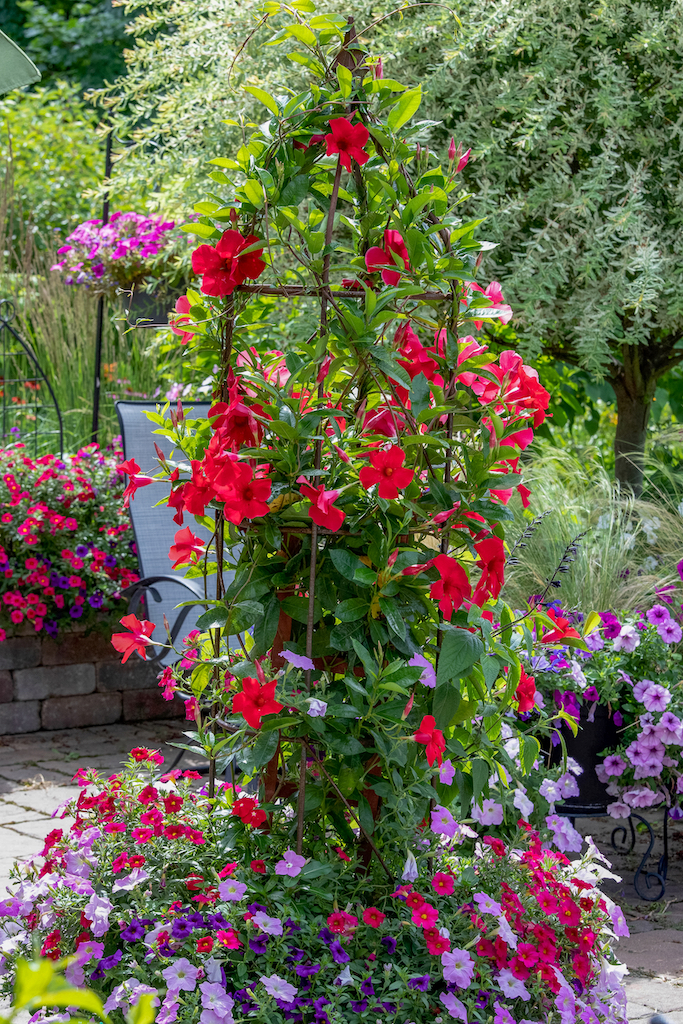
Planting, Growing, and Caring for Mandevillas
Read Next
Types
- ‘Sun Parasol Giant Peach Sunrise’ is a rare peach-colored mandevilla with massive 5” blooms and vigorous vining stems that can reach ten feet long.
- ‘Pink Parfait’ (Mandevilla x amabilis) sports vivid pink double flowers on vines that can reach 20 feet. If you’ve got a large arbor to cover, this is the one.
- ‘Bombshell Coral Pink’ is a hybrid with more restrained vining that is perfect for patio pots or baskets. Fantastic pink blooms contrast perfectly with the deep green foliage.
- ‘Tropical Breeze Velvet Red’ is a mounding mandevilla perfect for overflowing large pots. Its deep scarlet-colored blooms are perfectly tropical.
Gardening Products
More Like This
Hi, MB, If your mandevilla is still growing over winter, I wouldn't trim it unless it gets too large or unwieldy for the space. I recommend pruning for shape in spring and removing any dead or lackluster stems. Like many plants, pruning will produce a bushier form with dense stems and foliage.
All plants brought indoors need to be watered over winter, but the frequency is far less than when they were active and growing outdoors. Plants brought inside are often accidentally forgotten about. If the soil dries to the point that no water is available to the plant, the plants can die just as they would at other times. Check with your finger and feel the soil moisture as deeply as possible. If it feels slightly moist or damp, the plant is fine. If the soil feels dry, give it a good watering. In spring, as the plant picks up growth, you can increase the watering frequency and begin fertilizing again.
Hi Florence,
Given the time of year, it is natural for mandevillas to drop their leaves due to the seasonal changes (lower temperatures and light levels). This is the time of year when they will enter their dormant stage.
If you are growing it outdoors in a container, it is likely time to bring it inside, especially if you live in a location where temperatures have dropped below 60°F at night. For the best way to bring it inside, check out the Overwintering section above.
If you are currently growing it indoors, the loss of leaves could be due to not enough light so make sure it is receiving the proper amount. Yellowing leaves can be a sign of overwatering or underwatering. Check an inch or two below the growing medium surface to see where the moisture level is. It also could just be your plants sign that it is time to rest for the winter.
Hope this helps!













Comments